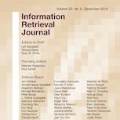Multi-core neuromorphic systems typically use on-chip routers to transmit spikes among cores. These routers require significant memory resources and consume a large part of the overall system's energy budget. A promising alternative approach to using standard CMOS and SRAM-based routers is to exploit the features of memristive crossbar arrays and use them as programmable switch-matrices that route spikes. However, the scaling of these crossbar arrays presents physical challenges, such as `IR drop' on the metal lines due to the parasitic resistance, and leakage current accumulation on multiple active `off' memristors. While reliability challenges of this type have been extensively studied in synchronous systems for compute-in-memory matrix-vector multiplication (MVM) accelerators and storage class memory, little effort has been devoted so far to characterizing the scaling limits of memristor-based crossbar routers. In this paper, we study the challenges of memristive crossbar arrays, when used as routing channels to transmit spikes in asynchronous Spiking Neural Network (SNN) hardware. We validate our analytical findings with experimental results obtained from a 4K-ReRAM chip which demonstrate its functionality as a routing crossbar. We determine the functionality bounds on the routing due to the IR drop and leak problem, based both on experimental measurements, modeling and circuit simulations in a 22nm FDSOI technology. This work highlights the constraint of this approach and provides useful guidelines for engineering memristor properties in memristive crossbar routers for building multi-core asynchronous neuromorphic systems.
翻译:暂无翻译





